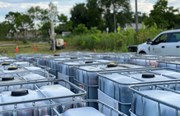Thermal Remediation of Fractured Rock
By: John LaChanceIn the decade since initial pilot and laboratory studies were performed on fractured rock, there have been numerous technical advances and successful cleanups of fractured rock sites using thermal remediation. However, fractured bedrock sites will always present unique challenges for thermal remediation—and remediation in general—due to the discrete nature of the fractures and the impact the fracture network has on groundwater flow as well as contaminant occurrence and distribution. Successful thermal remediation of a fractured rock site must take into account multiple factors to select the appropriate technology or combination of technologies, and design a site-specific treatment plan. Each plan is unique with respect to the physical and chemical properties of the contaminants, their distribution in the rock matrix and remedial goals—all of which must be considered in developing the heating and extraction strategy.
In this blog post, we’ll cover some of the factors to consider when planning a successful thermal remedy for fractured rock. If you’d like to dig deeper into thermal treatment for igneous and metamorphic bedrock, join me next week when I’ll be hosting a webinar titled, Thermal Remedy for Fractured Crystalline Rock.
REMEDY PLANNING CONSIDERATIONS
To build a representative conceptual site model (CSM) for a fractured rock site, the nature and extent of both the fractures and contaminants must be identified through site characterization. This data informs the evaluation, selection, and design of the thermal remedy.
In some bedrock settings (e.g., sedimentary formations such as sandstones, siltstones, and shales), the water and contaminant movement in the fractures interacts with the water and contaminant movement (diffusion) in the surrounding rock matrix. This potential interaction must also be considered in the design of the heating and extraction strategy.
THERMAL REMEDIATION OPTIONS
The primary removal mechanism at fractured rock sites is normally volatilization of the contaminants and removal from the subsurface by vapor extraction. This applies to LNAPL, DNAPL and dissolved plumes consisting of VOCs, CVOCs, and lighter SVOCs like chlorobenzene and naphthalene. For these contaminants, heating to 100°C is sufficient to achieve high removals (99.99%) and meet low remedial standards.
Thermal conduction heating (TCH) may be effective at achieving the higher required target treatment temperatures (250°C to 300°C) necessary for removal of targeted contaminants with higher boiling points like PAHs, TPH, PCBs, and PFAS.
If the targeted zone is below the water table there are three potentially effective thermal technologies:
- Thermal conduction heating (TCH)
- Electrical resistance heating (ERH)
- Steam enhanced extraction (SEE)
Selection of the heating technology is dependent upon the nature of the rock matrix (porous or not) and fracture network.
TCH is the only thermal technology that can effectively heat fractured igneous and metamorphic rocks with low matrix porosities. This is because the low matrix porosity and consequent low moisture content of the rock prevents ERH from being effective and, in general, the fracture porosity and permeability of these formations is too low for effective steam injection and extraction. It’s these features (low matrix and fracture porosity) that that increase the effectiveness of TCH, as they result in thermal conductivities that are more uniform and 2 to 4 times higher than porous media.
DESIGN CHALLENGES
The challenge in fractured igneous and metamorphic rock is designing an effective vapor (and in some cases liquid) extraction system. Effective systems address the fact that the fractures controlling vapor and liquid transport are discrete and may be widely spaced. One strategy that has proven effective is to co-locate the vapor extraction wells and heater wells in the same boring. The heater well spacing is typically 15 ft, creating a dense network of vertical extraction wells screened across and throughout the heated zone. This network results in a very high probability of intersecting the primary fracture network to ensure effective pneumatic control of contaminant vapors. This approach also reduces the cost of implementation and increases sustainability, as separate boreholes do not have to be installed for vapor extraction.
Fractured bedrock sites have always been challenging to remediate, but thermal treatment is a viable option when you understand the subsurface and the technologies most suited to it.
If you would like to learn more or have questions about using thermal technologies to remediate bedrock sites, register for next week’s webinar, Thermal Remediation of Fractured Crystalline Rock. The webinar will review in situ thermal remediation technologies for the remediation of fractured rock and present relevant case studies. There will also be a Q&A, so come prepared with questions.

